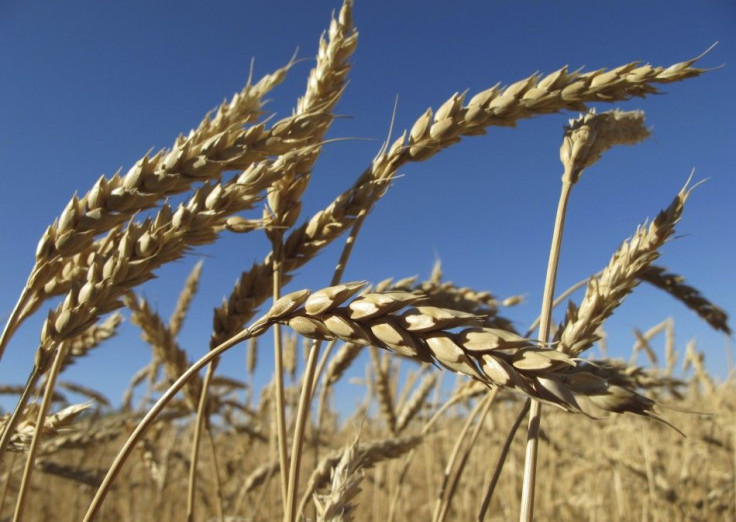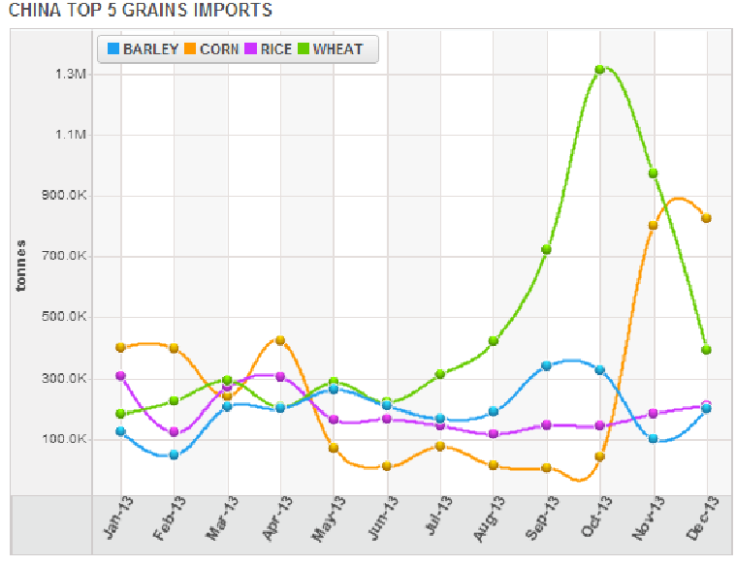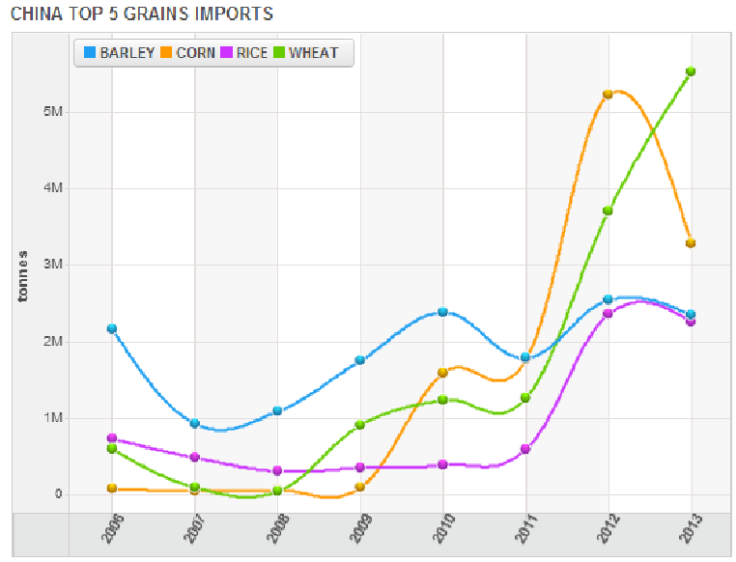China Absorbs Wheat: Imports Skyrocket 5000% For December 2013

Here’s a percentage change you don’t see often on Wall Street: 5,319.1 percent.
That’s the change from December 2012 to December 2013 in China’s wheat imports, measured in kilo tonnes, according to a recent Citigroup Inc. (NYSE:C) note.
In real terms, the change is also staggering.
“That 5319% YoY increase was not a typo,” wrote Citigroup China commodities analyst Shawn Shen in an email to IBTimes. “Chinese wheat imports were 395.22 kt in December 2013 and 7.29 kt in December 2012.”
From 7 kilo tonnes to almost 400 kilo tonnes, the startling one-off statistic illustrates China’s reliance on wheat imports in 2013.
The country is already the world’s biggest wheat consumer, but it suffered from a smaller harvest in 2013, reported Bloomberg. Bad weather spoiling domestic harvests in 2013 meant China could stand to beat out Egypt as the world’s top wheat importer.
On an annual basis, China’s wheat imports rose from less than 1 million tonnes in 2009 to 5.5 million tonnes in 2013, according to data compiled by Thomson Reuters. China’s imports of barley, corn and rice couldn’t keep up.


In 2013, China imported by far the most wheat from the United States, relative to any other country it imported from. It bought 3.8 million tonnes of U.S. wheat, relative to the second top partner Canada, who sold China 866,000 tonnes.
December 2013, too, pales in comparison to October 2013. In the latter month alone, China imported 1.3 million tonnes of wheat, according to the Citi note.
Thankfully, world wheat production for the 2013-2014 season is projected to hit a new record, according to the USDA’s latest wheat outlook. China led that increase in January 2014, up 1 million tonnes to 122 million. China’s Henan province is its biggest growing region.
For the year overall, China increased wheat imports by 50 percent thanks to the record U.S. harvest, in its second largest yearly import boost by commodity, said Citi. China consumed 122.5 million tonnes of wheat in 2011, on USDA estimates. China domestically produces the vast majority of its wheat consumption.
Russia, China, India, the European Union and the U.S. are among the world’s top wheat producers.
The U.S. winter wheat crop has suffered from bitter temperatures, as growers' “snow cover” evaporated, reported the USDA on Monday. Wheat is used in flour, noodles and livestock feed, among other uses.

China has relied heavily on imports and production of raw materials to fuel its economic growth over the past decade. Lately, fears of a Chinese economic slowdown have spooked commodities investors.
© Copyright IBTimes 2025. All rights reserved.





















